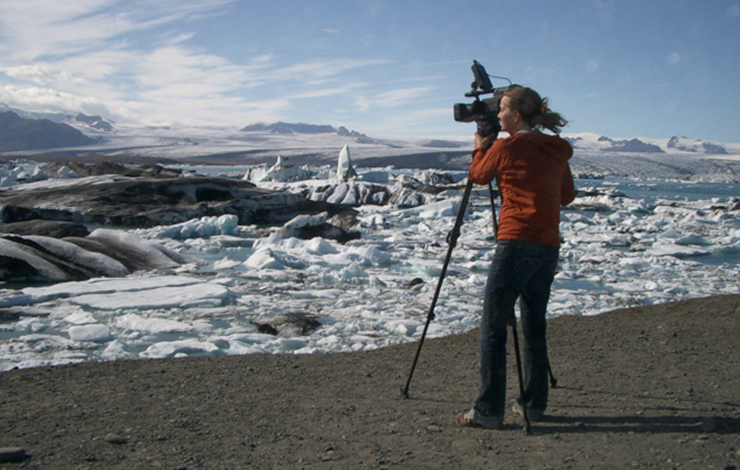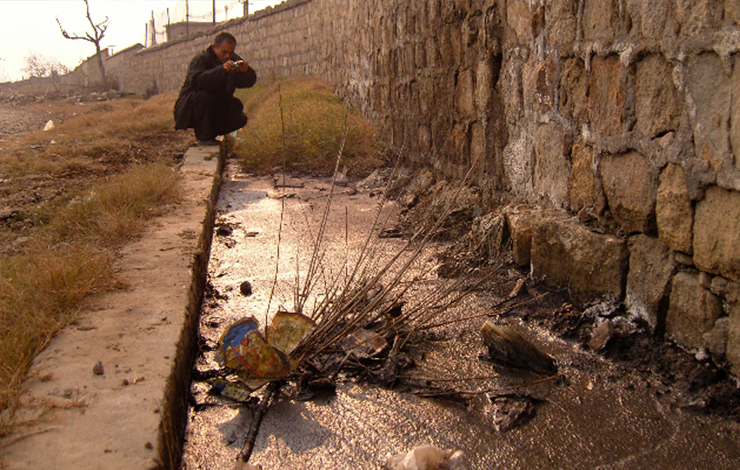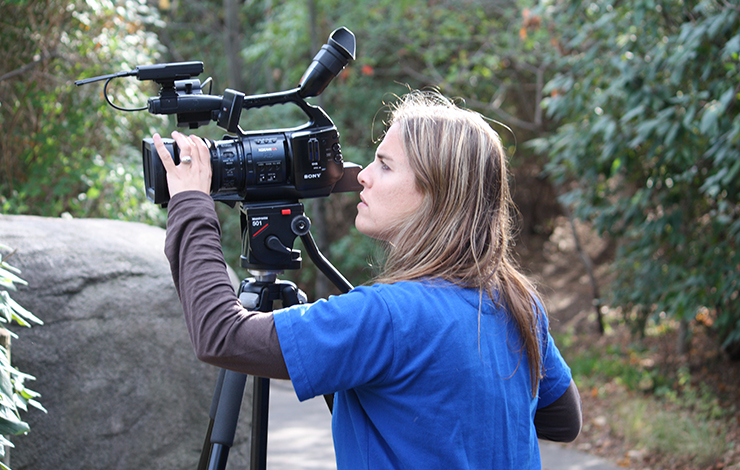
For many documentarians, the National Science Foundation's "broader impact" funding requirement--that organizations devote part of the funding they receive to public outreach--has created a viable career out of an otherwise niche film genre and academic discipline. With an annual budget of about $6.9 billion, the NSF is the funding source for approximately 20 percent of all federally supported research conducted by American colleges and universities. For the social sciences, the NSF is the major source of federal backing. Connected at its core to this desire to communicate relevant issues to a broader public, documentary filmmaking has thus in recent years found a viable partnership in the subject of science and nature. Today, many of the universities that receive foundation grants now work in tandem with documentary filmmakers, while others develop educational programs to train students on the art and craft of science and wildlife filmmaking.
The Yale School of Forestry & Environmental Studies, falling into the former category, houses a publication called Yale e360. Run by former journalist Roger Cohn, this publication aims to do for forestry and environmental studies what the Harvard Business Review does for business: bring academic ideation to the public. Launched in 2008 through foundation grants and Yale donors, e360 has co-produced--and in one case produced--four short documentary videos to help communicate ideas to a broader audience. These "video reports," as e360 likes to call them, range in length from 15 to 40 minutes and cover topics of local and global significance, such as the effects of mountaintop mining on Appalachian water streams or the ways that climate change creates human conflict in Bangladesh.
The Warriors of Qiugang is e360's best-known work to date, earning an Academy Award nomination this year for Best Documentary Short Subject. Co-produced by e360 with filmmakers Ruby Yang and Thomas Lennon, the video report chronicles the bravery of a group of remote Chinese villagers who take on a chemical company that is polluting their air and water supply.

The filmmakers have screened the documentary in festivals, but it is otherwise an exclusive feature on the e360 website, where it has helped the publication's goal for public outreach, bringing in more than 50,000 people to watch the video report since its debut in January 2011. Additionally, the film has grown the website's audience, both in the US and globally, by 17 percent over the previous year. During the most recent three-month period, 37 percent of the website's visitors came from outside of the US, including about 7.7 percent from Asia. Compared with the same period last year, the website's traffic from China has tripled. From this success, Cohn hopes to increase his efforts with filmmakers, potentially producing as many as several video reports a year, should funding allow.
The Center for Environmental Filmmaking at American University is another example. Part of American University's School of Communication, the Center was founded in 2005 by respected wildlife film producer Chris Palmer on "the belief that films and new media are essential educational and political tools in the struggle to protect the environment. The Center's mission is to train filmmakers to produce films and new media that effectively strengthen the global constituency for conservation."
"The world faces immense environmental challenges," Palmer says. "Powerful, emotive, and affecting images and films can play a key role in raising the importance of conservation and bringing about change. We are committed to raising awareness and empowering action through the innovative use of media."
The Center's work falls into four areas:
- Forming partnerships with well-established organizations such as the National Oceanic and Atmospheric Administration, the National Park Service and Maryland Public Television.
- Bringing respected filmmakers to campus to teach and mentor aspiring filmmakers.
- Developing innovative, enriching programs and classes such as Classroom in the Wild.
- Advocating for the ethical treatment of wildlife and the environment.
Having worked for years in the field before teaching, winning two Emmys and an Oscar nomination, Palmer brought to the Center his many relationships with producers and distributors like IMAX, Discovery and Maryland Public Television, which now broadcasts American University student films as part of a series about Chesapeake Bay. The Center's location in the nation's capital, in close proximity to the headquarters for National Geographic and Discovery, grant it a particular relevance for students who want a career in this field as well as for nature and wildlife filmmakers who want to teach in a university setting.
The Center also offers two on-campus classes. Producing Environmental and Wildlife Films teaches students about the business of filmmaking. Environmental and Wildlife Production gives students the opportunity to engage in the hands-on production of films for networks like PBS. One documentary, EcoViews, won a regional Student Emmy in 2008. Another, The Anacostia River Project, was selected as an outstanding example of meaningful and influential filmmaking by the New Media Literacy Project, and funded by the Ford and MacArthur Foundations.
Among the Center's most visible programs include Classroom in the Wild, which aims to bring students out of the classroom and into the field to shoot on location in geographically and environmentally significant areas such as the Florida Everglades or Alaska; the Eco-Comedy Video Competition; and the Center's Code for Best Practices in Sustainable Filmmaking.
Montana State University holds the only terminal degree program in Science and Natural History Filmmaking in the world. Now ten years old, the program started off as a conversation between filmmakers Bo Landin and Ronald Tobais in a bar in Sweden. The idea was to take people with a science background and train them to be filmmakers as a way to increase the public's understanding and interest in science and natural history. Tobais then went on to become the program's first director, with support from Discovery Communications.
Geographically close to Yellowstone--what could be called the country's center of conservational activity--Montana State University's MFA program in Science and Natural History Filmmaking Montana State University's MFA program in Science and Natural History Filmmaking accepts about a dozen students each year. Director Robert Arnold and Professor Dennis Aig explain the program as "richly complex," and it is. Although the program highlights film in its title, the program is really about using the right platform to explore an idea about natural history and science. The program takes students through a broad curriculum on the fundamentals of filmmaking, alternative nonfiction, writing for documentary, and film theory and critical approaches to filmmaking. The program is designed to be a vehicle for students to find their voice as an auteur as opposed to training students to utilize a particular school of thought such as direct cinema or cinema vérité to communicate an idea.
The Montana State University program has produced award-winning students. There have been six Student Emmys (including three National), six Fulbright Awards and a host of other honors. Students also maintain a website called LIFEONTERRA, which is a "collaborative filmspace and laboratory exploring the questions and ideas on the cutting-edge of science and at the farthest horizons of the natural world." The "TERRA: The Nature of Our World" video podcast launched in October 2005 and has been downloaded over one million times, aiding in the public awareness and interest in science and the natural world.

The Montana State program has, since its inception, also worked closely with the prestigious, Missoula-based International Wildlife Film Festival, and this May the festival will salute the program on its 10th anniversary, with a special award honoring the first head of the program, Ronald B. Tobias. Throughout the years, Montana State students have worked, interned, volunteered and screened their first films at the festival
As with American University's Center for Environmental Filmmaking students, Montana State University students find futures in a growing niche--with PBS, Discovery or National Geographic; independent filmmaking; or museums for science and nature. They may also find themselves co-producing projects with university-affiliated initiatives such as Yale's e360.
If funding agencies such as the National Science Foundation had once hoped that by changing their funding requirements they could raise public awareness of the issues facing the natural world, then this desire has worked to create a public hunger to explore these topics through popular media such as documentary. There is perhaps no better motivation for a documentary filmmaker than this.
Belinda Baldwin is a Dallas-based audience development director for a diversified media group including television, Web and mobile. She teaches a graduate level marketing course at SMU and writes on the topic of media, popular culture and social change for a variety of magazines and journals including the Harvard Book Review, The Advocate, Documentary and MovieMaker. She holds a PhD from USC in Cinema-TV.
